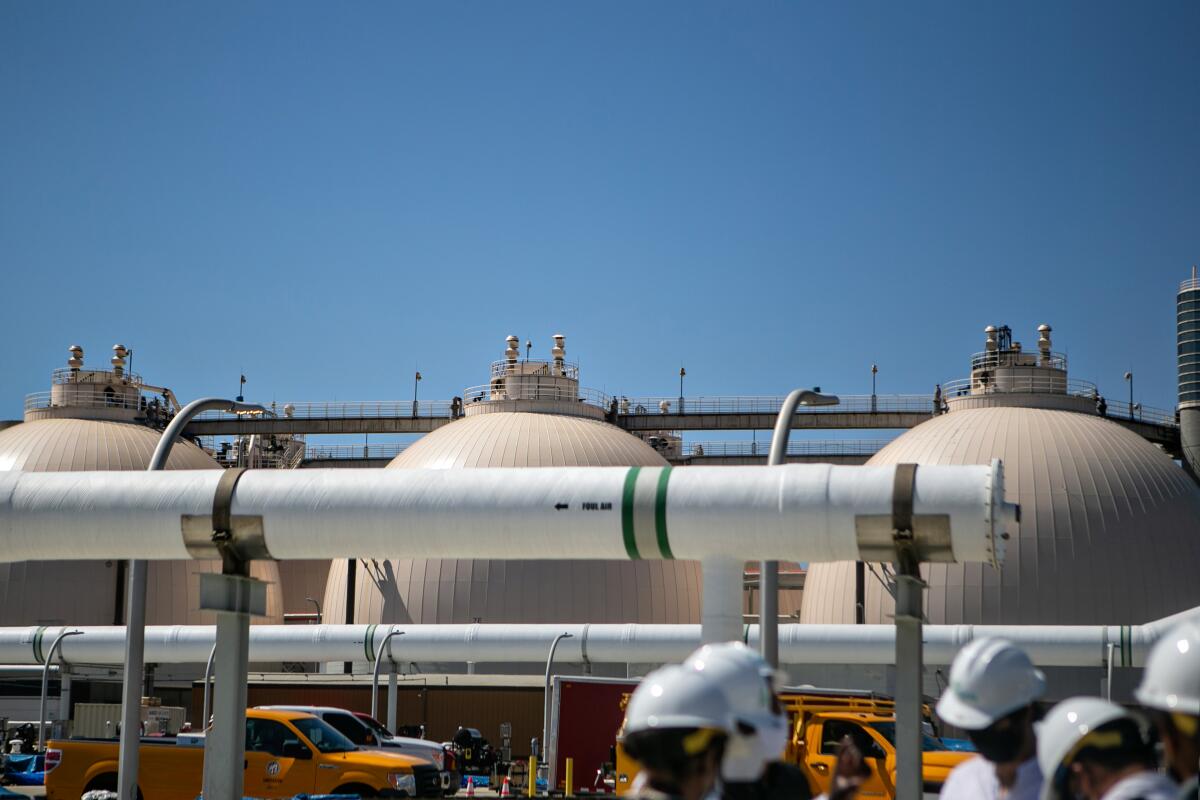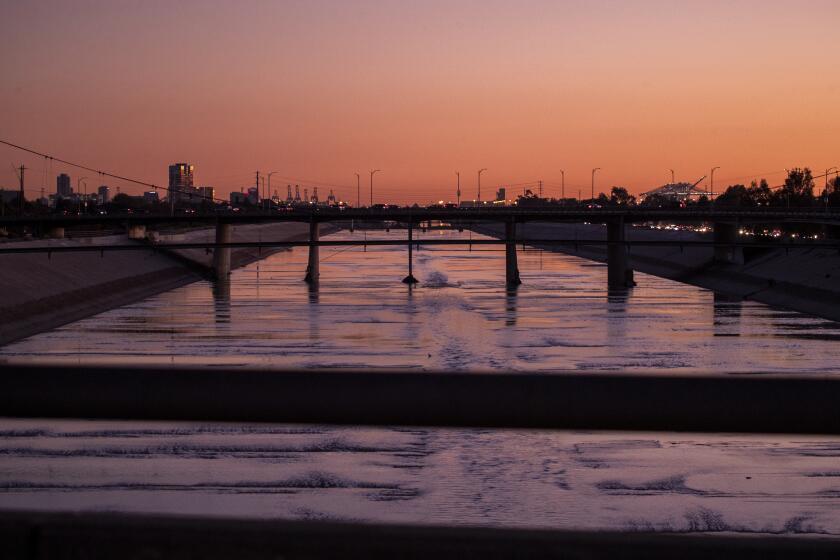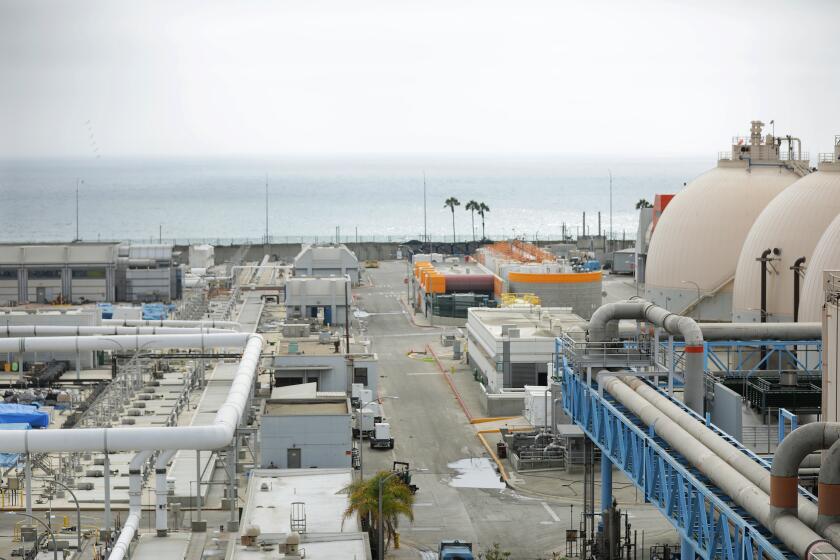After massive sewage spill, feds order fixes at L.A. water plant to improve resilience

- Share via
Years after a massive spill at a Los Angeles water treatment facility dumped millions of gallons of raw sewage into the Pacific, officials with the U.S. Environmental Protection Agency have ordered several improvements at the plant to help prevent another such disaster, even when facing more intense storms from a changing climate.
The administrative order of consent, issued this month, requires the Hyperion Water Reclamation Plant in Playa del Rey to make significant fixes to its operations and infrastructure, including improving monitoring systems and overflow channels, after the federal agency’s review of the 2021 spill. The agreement, between the EPA and the Los Angeles Sanitation and Environment division, mandates the updates be implemented by the end of 2025, though some are required to be completed as soon as within 30 days, according to the order.
The city “will conduct work to improve the Hyperion Wastewater Treatment Plant high flow capabilities and make the Plant more resilient during large, intense storms that may be the result of climate change,” according to a statement from the EPA released Thursday. As the warming atmosphere has fueled more extreme weather across the globe, including disastrous downpours across Southern California, pounding rains have overwhelmed sewer pipes across Los Angeles and pose increasing challenges for the region’s water infrastructure.
Capturing rainfall is only one part of the L.A. River’s job. It is also a flood control channel that is critical to protecting lives and properties when stormwaters surge.
“When plants of this magnitude fail, it causes ripple effects that impact access to Los Angeles’ beaches and the health of ocean wildlife,” EPA Pacific Southwest Regional Administrator Martha Guzman said in a statement. “These improvements will help prevent failures and reduce large beach contamination events for Los Angeles residents and visitors.”
Some of these mandated improvements are already in the works, said Tonya Shelton, a spokesperson for the Los Angeles Department of Public Works, which includes the L.A. Sanitation and Environment division.
The city’s sanitation team “began taking action immediately after the incident in 2021 and we will continue working closely with our state and federal partners to implement these important improvements,” Shelton said in a statement. “The improvements will receive high priority. We expect to meet the deadlines.”
It wasn’t immediately clear how much the improvements would cost the city or its residents, but Shelton said the city had already increased monitoring and alarms systems at Hyperion, added staff trainings, and started work to make the system more resilient to “respond to extreme weather events that are becoming more frequent and unpredictable given climate change.”
Federal officials found that the July 2021 spill at the city’s largest and oldest wastewater treatment facility violated the Clean Water Act in several ways — and continued to do so months after the initial sewage breach — by “discharging 12.5 million gallons of untreated sewage into the Santa Monica Bay,” EPA officials said. Although the majority of the violations came from that initial discharge, the EPA found that flood damage from the sewage spill also affected other water treatment processes, resulting in high levels of oil, grease or solids to be released, which also caused at least 53 other effluent violations from July through October 2021.
Even as flooding at a major Los Angeles sewage plant threatened the lives of workers, communication failures masked the enormity of the crisis.
Initial reports estimated the spill discharged 17 million gallons into the ocean after filters at the plant backed up, overwhelming the system, but the EPA’s new order clarified that about 4.5 million gallons that almost went into the sea were “pumped back to the facility for secondary treatment” and discharged through standard measures.
On July 11, 2021, bar screens that filter out larger solids during the initial treatment process at the plant jammed and shut down, causing the untreated sewage to overflow and flood part of the plant, according to the EPA. Eventually, that sewage entered a storm drain system, which flowed through a pipe that discharged the wastewater about a mile offshore.
The order also requires the plant to update its emergency operations, clean and remove potentially dangerous debris and ensure proper staffing and training. Officials found in 2021 that the spill was worsened by delayed public notifications, including to nearby emergency responders and beachgoers.
More to Read
Sign up for Essential California
The most important California stories and recommendations in your inbox every morning.
You may occasionally receive promotional content from the Los Angeles Times.













